Pennsylvania RR had the largest Centipede fleet, purchasing 12 pairs that were permanently coupled. Primarily freight locomotives, the Pennsy Centipedes were briefly used in passenger service. Seaboard Air Line and Ferrocarriles Nacionales de México (N de M) purchased single A units.
High maintenance costs and reliability issues cut the Baldwin Centipedes’ careers short. The PRR and SAL locomotives were scrapped in the late 1950s to early 1960s. The Centipedes lasted slightly longer in Mexico with some units serving into the early 1970s.
The plastic body shell features well-defined molded detail. Separate detail parts include horns, see-through grills over the rooftop fans, and trainphone antennas on the PRR versions. There’s also clear glazing in all the windows.
The models are available decorated in Penny’s 5-stripe passenger scheme and single stripe freight scheme. Single A units are available decorated for SAL and N de M.
A version is also available in a fantasy Union Pacific scheme. The UP did order a set of Centipedes, but canceled the order before delivery. These units ended up as Baldwin demonstrators and were scrapped in the early 1950s.
The PRR and UP versions come in A-A sets. A drawbar connects the A units, but user-installed knuckle couplers are also included. The single A units include factory installed knuckle couplers on both ends.
Removing the A unit’s press-fit plastic body shell reveals a round, downward-facing speaker behind the cab, motor with dual brass flywheels, and the Paragon2 DCC circuit board. The die-cast metal chassis provides much of the model’s 4.8 ounces of weight. In addition, a 16-wheel drivetrain gives the Centipede a drawbar pull equal to 24 N scale freight cars.
Like the prototype, the model features an articulated chassis. The pilot’s aren’t fixed, though, which isn’t prototypical but allows the model to negotiate a minimum curve radius of 9¾”.
On our DCC test track, the model captured the unique sound of the Baldwin prime movers. I especially enjoyed hearing the two Pennsy units operate while paired together. User triggered features include the bell, air horn, and controlling the prime mover rpm independently from the locomotive speed (manual notching).
Using the model’s many programmable configuration variables (CVs), I could advance consist two units, adjust individual sound effect volumes, and set up speed tables.
The model also ran smoothly on our DC test track. The engine rpm sounds increased and decreased with the DC throttle. A brake squeal sounded when I quickly decreased the throttle. The addition of a BLI DC Master Analog Control module (sold separately for $49.99) gives DC users the ability to trigger sound effects and program CVs.
On both DC and DCC layouts the models accelerated smoothly to a top speed of 55 scale mph, which is about 10 mph slower than the prototype’s lowest gearing.
The manufacturer’s suggested retail price is $249.99 for a single A unit and $489.99 for an A-A set. Visit www.broadway-limited.com for more information.
Look for a full review of the N scale Baldwin Centipede diesels in an upcoming issue of Model Railroader magazine.





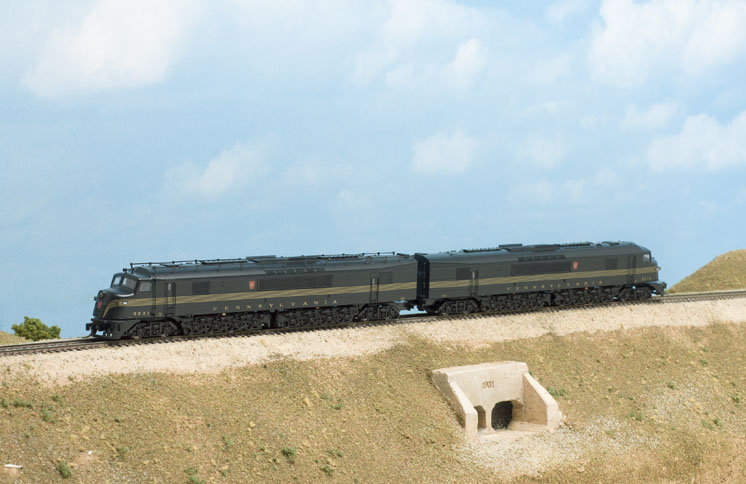
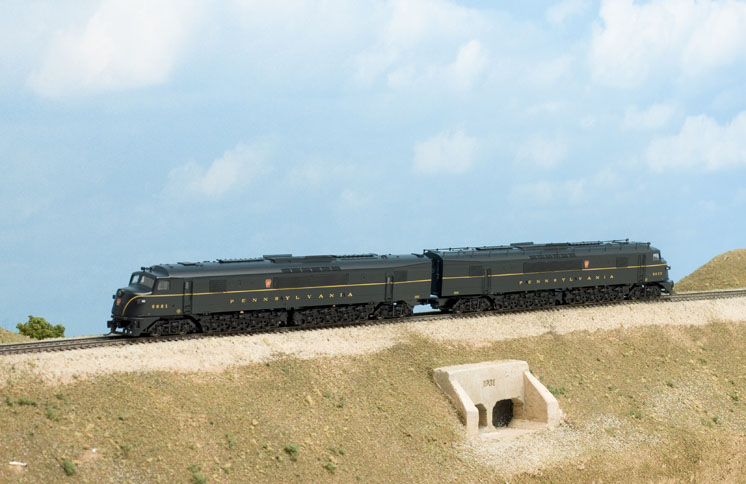
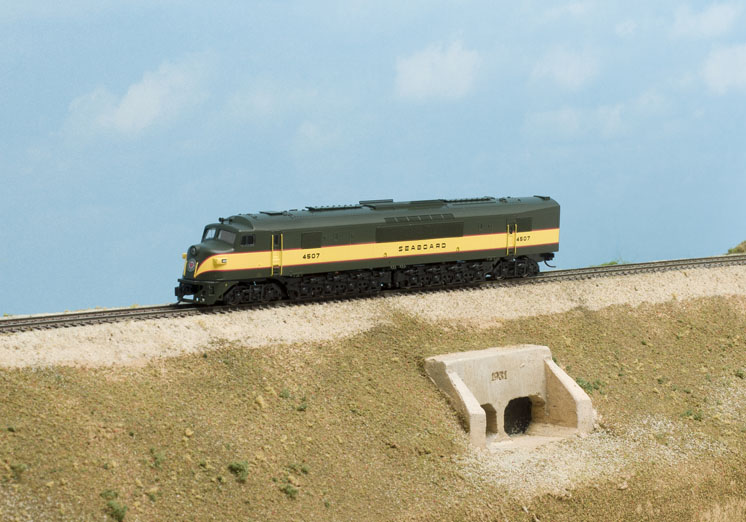
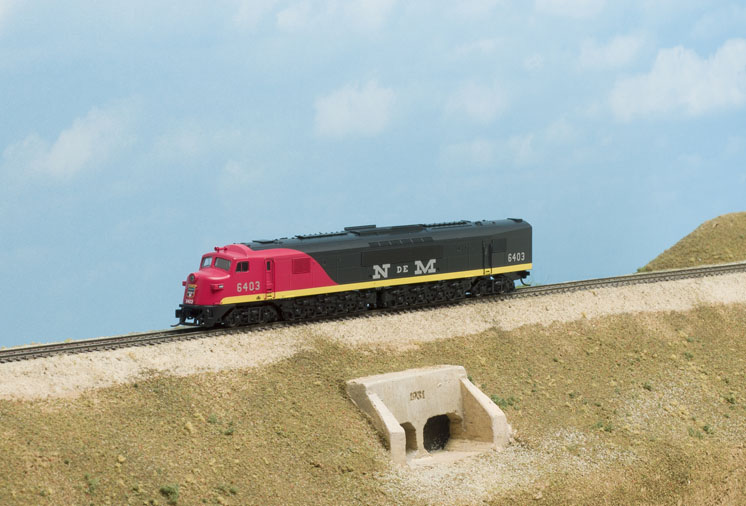
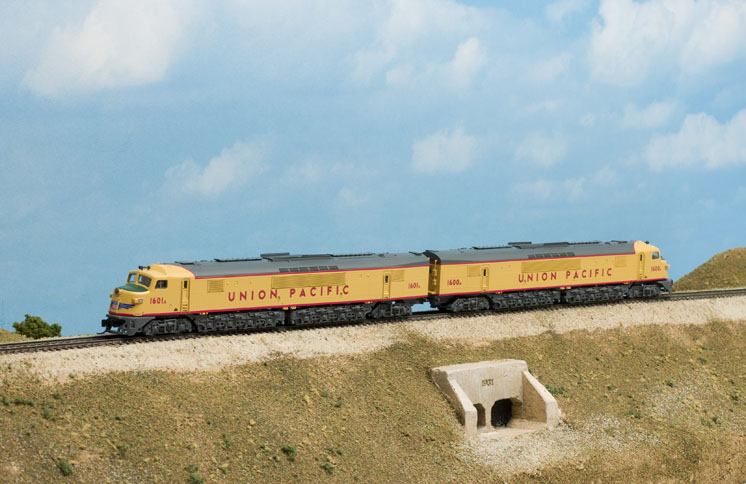
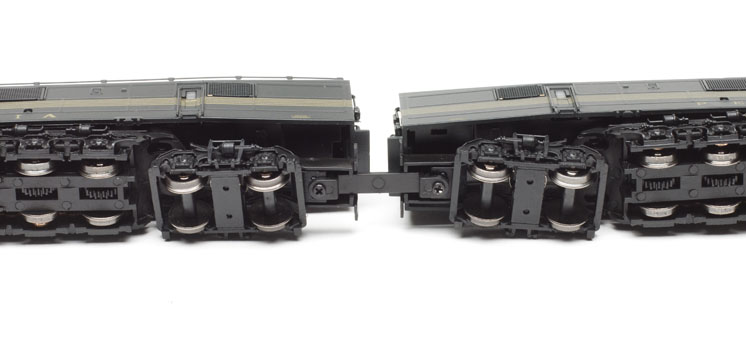
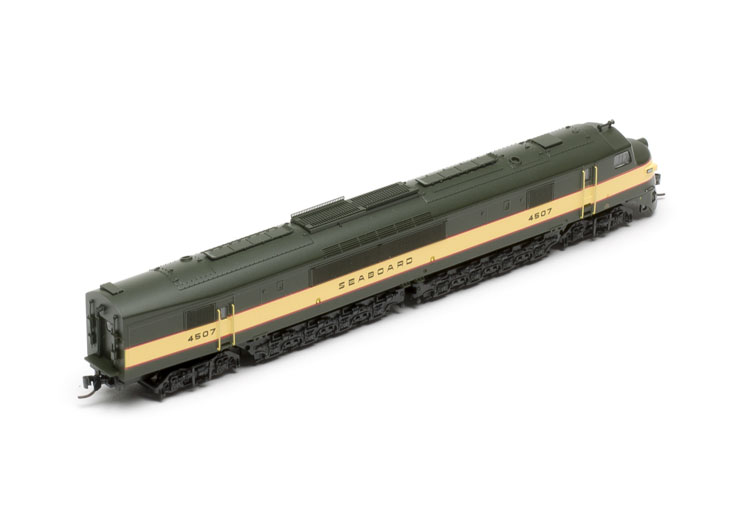










Point of fact, the pilot on the prototype was not fixed. It swiveled with the articulated frame, as can be seen on this photo from Wilipedia of a pair rounding horseshoe curve: https://en.m.wikipedia.org/wiki/Baldwin_DR-12-8-1500/2#/media/File%3APRR_BH50_x2.jpg
It would be nice to have a shorter drawbar included for modelers with wider radius curves on their layout.